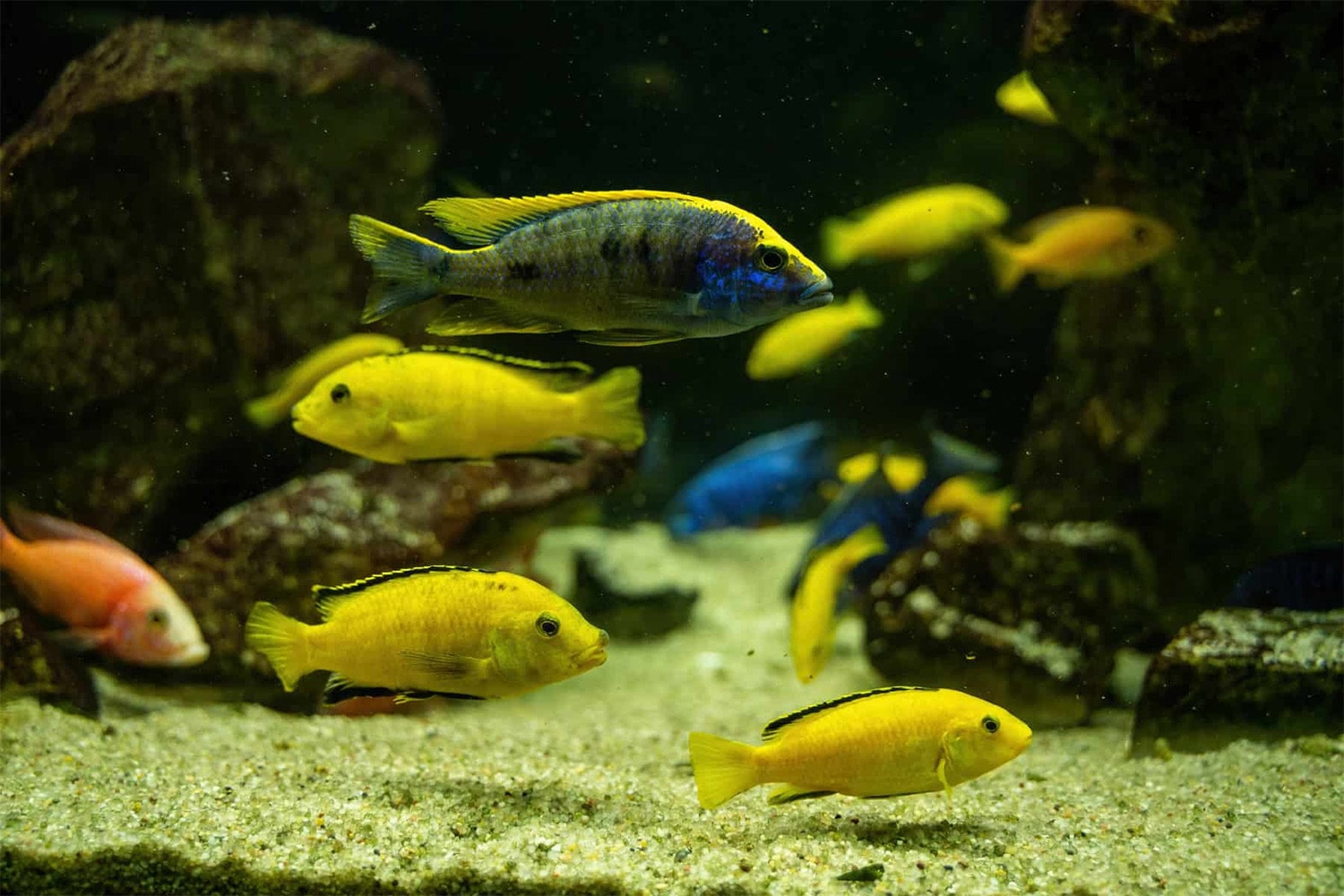
30 interesting facts about cichlids
- 👁️ 243
Cichlids are a diverse and widespread family of freshwater fish known for their vibrant colors, intricate behaviors, and complex social structures. Found predominantly in tropical and subtropical regions of Africa, South America, and parts of Asia, cichlids have captivated the attention of aquarists and scientists alike. With over 1,200 species, their dietary habits vary greatly, ranging from strictly herbivorous to carnivorous, reflecting their adaptability to different ecological niches. Cichlids play a significant role in their ecosystems, not only as predators and prey but also through their feeding activities, which can affect the physical environment. Let’s explore some fascinating facts about the diet of cichlids and their ecological impact.
- Cichlids exhibit a wide range of feeding strategies, including herbivory, carnivory, omnivory, and detritivory.
- Some cichlid species have specialized pharyngeal jaws, which allow them to process a variety of foods efficiently.
- African cichlids from Lake Malawi are known for their rock-dwelling (mbuna) lifestyle, primarily feeding on algae scraped from rocks.
- South American cichlids such as the Oscar are opportunistic feeders, consuming fish, invertebrates, and plant matter.
- Rift Valley cichlids have evolved to fill almost every dietary niche, including piscivory (fish-eating), insectivory, and molluscivory (snail-eating).
- Certain cichlids practice lepidophagy, a feeding behavior where they tear scales off of other fish to eat.
- The specialized diet of some cichlids includes kleptoparasitism, where they steal food from the mouths of other fish.
- Cichlids in the genus Tropheus from Lake Tanganyika are strictly herbivorous, feeding on filamentous algae.
- Some cichlid species are known to be micropredators, feeding on small invertebrates and zooplankton.
- Cichlids can affect the population dynamics of their prey, controlling the abundance of certain species in their habitats.
- The introduction of non-native cichlids into new environments has sometimes led to the decline of local fish species due to predation and competition.
- In Lake Victoria, the Nile perch, a large cichlid, has drastically altered the ecosystem by preying on native cichlids.
- The feeding activities of cichlids can influence the sediment composition and water clarity of their habitats.
- Cichlids use a variety of hunting techniques, including ambush predation and chasing down prey.
- Parental cichlids often protect their young, providing them with food through direct feeding or leading them to feeding grounds.
- The dietary flexibility of cichlids has been a key factor in their ability to colonize diverse aquatic environments.
- Some cichlids engage in farming behavior, cultivating and defending patches of algae or other food sources.
- Nutritional needs among cichlids can vary greatly, with some species requiring specific diets to maintain health and coloration in captivity.
- Cichlids have been observed using tools, such as rocks, to crack open snail shells for food.
- The butterfly peacock bass, a cichlid native to the Amazon basin, is a top predator that primarily feeds on smaller fish.
- Intraspecific competition for food can lead to territorial behaviors among cichlids.
- Some cichlids change their dietary habits as they age, transitioning from planktonic feeders to consuming larger prey.
- The digestive systems of cichlids are adapted to their specific diets, with herbivores having longer intestines than carnivores.
- Malawi bloat, a common ailment in African cichlids, is often related to dietary issues in captivity, such as overfeeding or inappropriate food.
- Cichlids contribute to the biocontrol of mosquitoes and other pests by feeding on their larvae.
- Many cichlids are specialized feeders with unique adaptations, such as protrusible mouths for sucking in prey.
- The diet of cichlids can influence their reproductive behavior, with adequate nutrition being crucial for breeding success.
- Some species of cichlids are known to practice coprophagy, consuming the feces of other fish to obtain nutrients.
- Alloparental care, where cichlids feed and protect unrelated young, has been observed in some species, indicating complex social behaviors related to feeding.
- The evolution of cichlids has been closely linked to their feeding habits, driving diversification and speciation within the family.
Cichlids offer a remarkable example of dietary diversity and ecological adaptability among freshwater fish. Their varied feeding habits not only illustrate the complexity of aquatic ecosystems but also highlight the intricate relationships between species and their environments. As researchers continue to study cichlids, these colorful fish provide valuable insights into evolutionary biology, ecosystem dynamics, and the impact of diet on species development. Understanding the feeding strategies of cichlids not only enriches our knowledge of aquatic life but also underscores the importance of preserving their habitats for future generations.
Cichlids are a diverse and widespread family of freshwater fish known for their vibrant colors, intricate behaviors, and complex social structures. Found predominantly in tropical and subtropical regions of Africa, South America, and parts of Asia, cichlids have captivated the attention of aquarists and scientists alike. With over 1,200 species,…